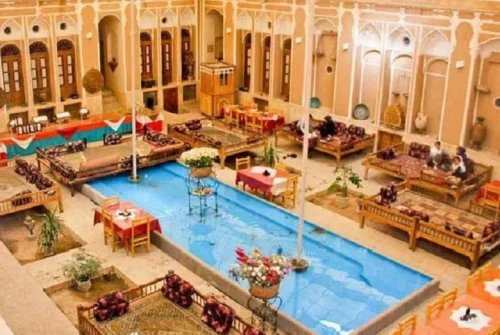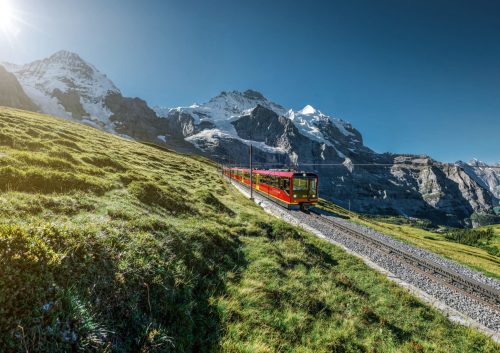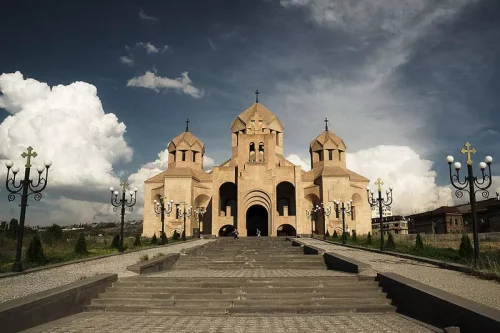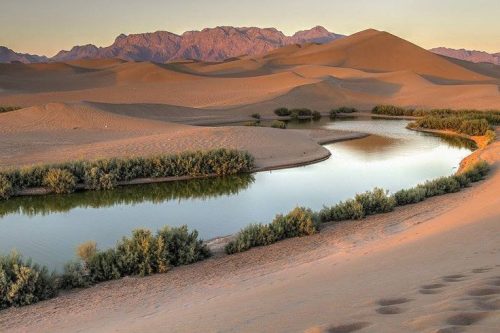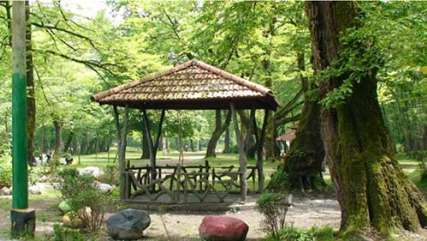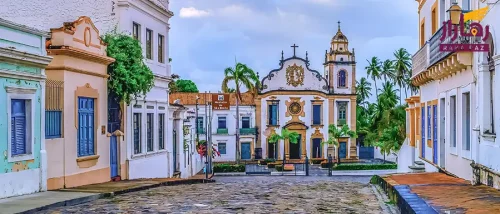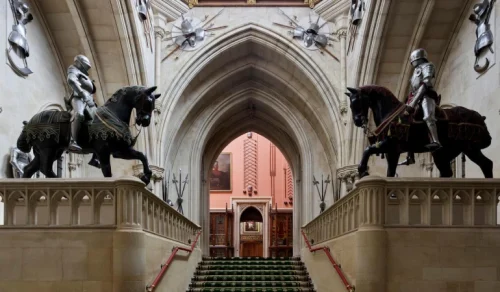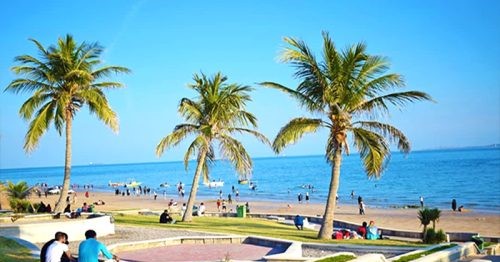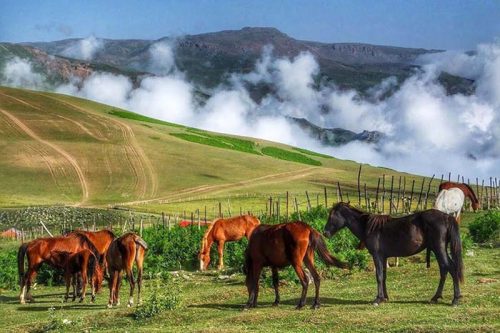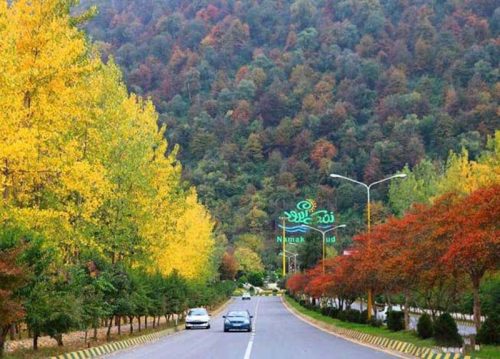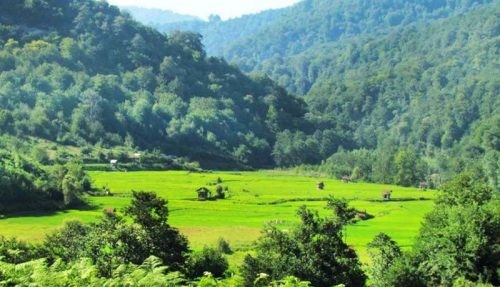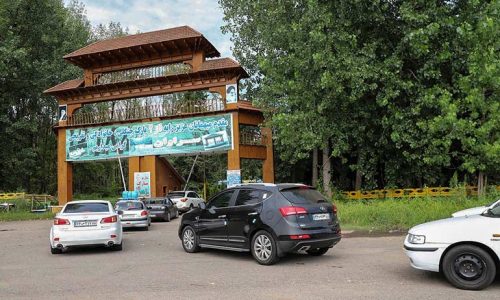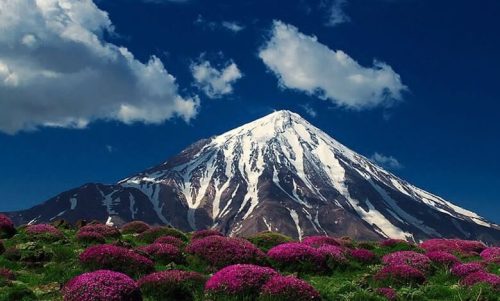Top Attractions in Mahalat | Visit Iran’s Netherlands!
If you plan to visit Mahalat, Iran Charter helps you experience the best. Known as Iran’s Netherlands for its beautiful nature and breathtaking landscapes, Mahalat offers much to explore. For more information about Mahalat’s attractions, visit our website. You can also use our online booking services to plan your trip to Mahalat.
Key Tourist Attractions in Mahallat: The Netherlands of Iran
Mahallat, a beautiful and scenic city in the Markazi province of Iran, is known as the Netherlands of Iran due to its numerous gardens and greenhouses. Attracting many tourists both locally and internationally, Mahallat offers a unique experience. Whether discovering fields of flowers or exploring historical sites, there’s plenty for nature and history enthusiasts to enjoy. Utilizing our online booking services, you can select the best hotels and flights for your trip and relish the beauty of Mahallat.
The Village of Flowers and Ornamental Plants in Mahallat
One of Mahallat’s most prominent attractions is its Village of Flowers and Ornamental Plants. Spanning over 110 hectares, this village is celebrated as Iran’s largest flower cultivation center. Visiting these colorful and aromatic meadows offers an unparalleled experience of nature, where you can see elegant and medicinal plants in all their glory. Iran Charter facilitates your journey with hotel and flight booking services, making your visit to Mahallat’s floral village convenient and enjoyable.
Natural Springs in Mahallat: Serenity and Adventure
Mahallat boasts several stunning natural springs, perfect for hiking, picnicking, and enjoying peaceful moments in nature. One of the most famous springs is located on the slopes of Haftad Gholleh Mountain, offering pristine waters and lush surroundings. Visiting these springs allows you to soak in Mahallat’s natural beauty and enjoy quiet, relaxing moments. Iran Charter guides you with the best travel offers to explore these attractions.
Relaxing Hot Springs in Mahallat
Mahallat’s hot springs are unique natural attractions that provide both therapeutic and recreational benefits. Rich in beneficial minerals, these springs aid health improvement and are ideal for those seeking relaxation and stress relief. A visit to Mahallat’s hot springs is a joyous and fulfilling experience for all ages. Iran Charter offers helpful information and suggestions, ensuring a well-planned visit to Mahallat’s hot springs.
Historical Sites in Mahallat
Mahallat, with its rich history and numerous historical sites, is a popular destination for history and culture lovers. Among its most significant sites is the Atashkooh Fire Temple from the Sassanian era, showcasing ancient Iranian art and architecture. Visiting these sites lets you delve into the region’s captivating history and enjoy exploring its ancient treasures. Iran Charter presents historical tours, inviting you to an educational and cultural journey in Mahallat.
Exploring Mahallat’s Natural Caves
Mahallat’s natural caves attract tourists with their stunning underground formations and breathtaking natural landscapes. Yekeh Chah Cave, dating back to the third millennium BC, is the most famous, drawing visitors to its subterranean wonder. Other notable caves include Azadkhan, Shah Bolbol, and Soorakh Gave, each with distinct features and stories. Ideal for adventure and discovery enthusiasts, Iran Charter offers comprehensive information and guidance to ensure a memorable cave exploration in Mahallat.
Ancient Nimevar Dam: A Historical Landmark
The ancient Nimevar Dam, an important archaeological site in Mahallat, holds historical and environmental significance. Built during the Sassanian era for water storage, the dam now serves as a recreational and tourist attraction. Surrounded by natural beauty and ideal picnic spots, the dam is perfect for leisure. Visiting the dam offers a glimpse into ancient technologies and a chance to enjoy Mahallat’s pristine nature. Iran Charter leads you with travel recommendations to exciting Mahallat destinations.
Bakherabad Bridge: A Historical Site in Mahallat
The Bakherabad Bridge, a historical landmark from the Qajar era, is one of Mahallat’s charming attractions, maintaining its allure over time. With its unique architecture, the bridge symbolizes the expertise and artistry of Qajar-era builders. Visiting Bakherabad Bridge offers insights into Iranian architectural history and a chance to appreciate a valuable historical monument. The bridge is also a great spot for photography and enjoying the outdoors. Iran Charter provides accurate information and historical tours to accompany your trip to Bakherabad Bridge.
Tourism in Mahallat: Discovering New Attractions
Mahallat, with its plethora of undiscovered tourist attractions, offers endless opportunities for adventure and exploration. From ancient castles to lesser-known natural wonders, every corner of Mahallat has something new to discover. Notable sites include Agha Khan Mahallati Castle, the 2000-year-old plane tree, Khorhe inscriptions, and Mël-e Malūneh. Utilizing Iran Charter’s online booking services, you can plan your visit to these destinations and experience a unique and memorable journey.
Recreational Activities in Mahallat
In addition to its scenic attractions, Mahallat offers various recreational activities, ensuring a fulfilling and unforgettable experience. From walking in flower gardens and mountain hiking on Haftad Gholleh slopes to participating in historical tours and relaxing at hot springs, Mahallat satisfies every traveler. Its cafes and restaurants offer delicious local cuisine, perfect for resting and enjoying your trip. Iran Charter provides diverse suggestions and optimal services, helping you plan leisure activities in Mahallat.
A Comprehensive Guide to Visiting Mahallat
Planning a trip to Mahallat’s attractions may seem overwhelming, but with Iran Charter’s comprehensive and precise guidance, you can enjoy a hassle-free and secure journey. The first step is selecting the best route and booking a suitable flight, easily accomplished using our services. Choosing accommodations that fit your budget and needs is also crucial; Mahallat offers a variety of hotels and guesthouses with a wide range of amenities and prices. Familiarizing yourself with attractions and planning visits is a key part of your trip. Iran Charter accompanies you at every stage, providing up-to-date and detailed information to ensure an amazing and memorable experience.
FAQ
- What is the best time of year to visit Mahallat?
- If you want to see the floral paradise of Iran at its liveliest, spring and summer are the best times to visit Mahallat.
- Where exactly is Mahallat located?
- Mahallat is located in the central province of Iran, approximately 262 kilometers south of Tehran and Esfahan.
- How can one travel from Tehran to Mahallat?
- From Tehran, head towards Qom and then Salafchagan. Continue towards Delijan, and after passing the village of Nimevar, you will reach Mahallat. This route takes approximately 3 hours and 40 minutes by car.
- Are the Mahallat hot springs open?
- Yes, according to the latest updates, the hot springs in Mahallat are available for tourists in hotels in the region, adhering to health protocols.
- Which city is closest to Mahallat?
- Mahallat is connected to Arak from the north, Esfahan and Golpayegan from the south, Khomein from the west, and Delijan from the east.
- What are the main attractions of Mahallat?
- Among the main attractions of Mahallat are the Khurheh Temple, the village of decorative plants, the springs of Mahallat, the hot springs, the Atashkooh Fire Temple, the scenic caves, and the ancient Nimevar Dam.
- How can one enjoy the Mahallat hot springs?
- To enjoy the Mahallat hot springs, you can stay at hotels and accommodations around the springs. These places typically provide pools and private baths for both men and women.
- How many hot springs are there in Mahallat?
- Mahallat has 6 natural hot springs named Shafa, Dombeh, Rheumatism, Hakim, Soda, and Soleimanieh.
- What are the ancient temples of Mahallat?
- Mahallat’s ancient temples include the Khurheh Temple, known as one of the most beautiful remnants from the Parthian era, featuring two complete columns and several semi-ruined ones.
- What is the village of Mahallat’s decorative plants like?
- The village of Mahallat’s decorative plants is the largest flower village in Iran, with an area of nearly 110 hectares. It is famous for producing a variety of colorful ornamental flowers and rivals even Holland.
- What is the Atashkooh Fire Temple in Mahallat?
- The Atashkooh Fire Temple in Mahallat is a Chahartaqi from the Sassanid era, located in the namesake village, and is considered one of the important historical monuments in the area.
- What are the scenic caves of Mahallat?
- The scenic caves of Mahallat include Yekeh Chah, Azadkhan, Shah Bolbol, Baba Jaber, and Soorakh Gave, all worth visiting for their natural beauty.
- What are the features of the ancient Nimevar Dam?
- The ancient Nimevar Dam dates back to the Sassanid era and was built for water storage. Today, it is a tourist attraction due to its historical significance and beautiful natural surroundings.
- What are the features of the Mahallat springs?
- The Mahallat springs are a beautiful and watery spot located on the slopes of the Haftad Gholle Mountain. This location features a large park, pleasant air, a beautiful river flow, and nearby cafés and restaurants.
- How can one reserve accommodation in Mahallat?
- To reserve accommodation in Mahallat, you can use our website Iran Charter (Irancharter.ir) and access the hotel reservation section. You can also contact the hotels directly or book through our application.
- What other historical attractions are there in Mahallat?
- In addition to Khurheh Temple and the Atashkooh Fire Temple, other historical attractions include Agha Khan Mahallati Castle, the 2000-year-old Mahallat tree, Khorhe inscription, Mël-e Malūneh, and the Nimevar Icehouse.
- What is the contact number for Iran Charter to book a trip to Mahallat?
- To book a trip to Mahallat, you can contact us at 02191091190.

